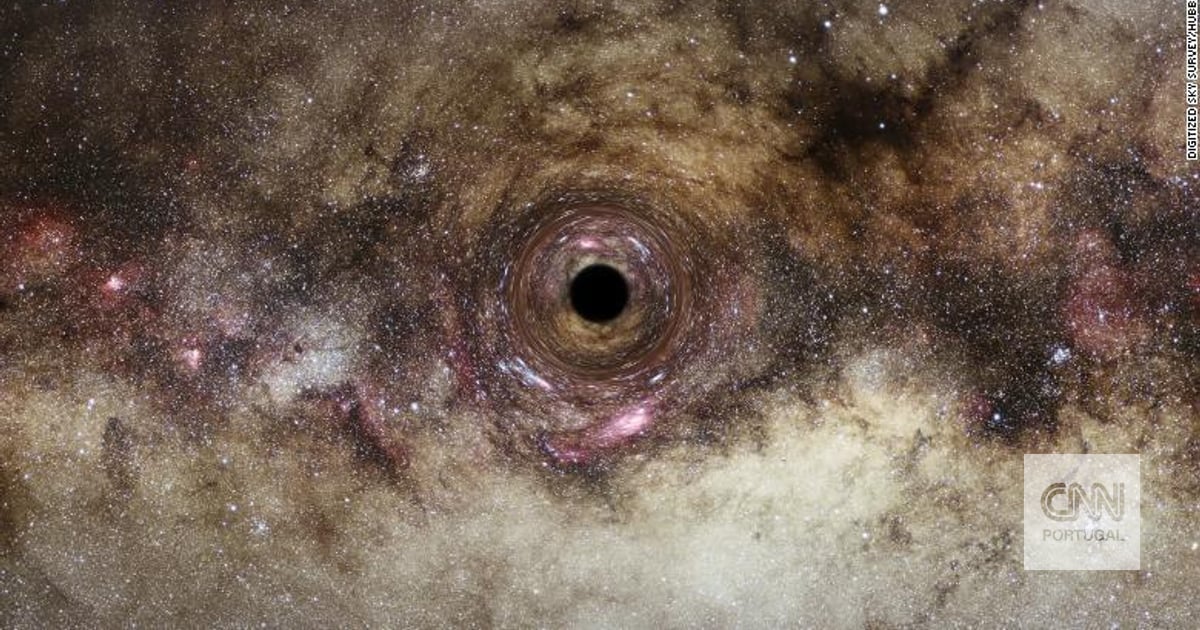For the first time, the Hubble Space Telescope has detected a lone object moving aimlessly in our Milky Way – the invisible spectral traces of a once radiant star.
When stars are massive enough to make our Sun look like a dwarf star, they explode and form a supernova. The remaining core is crushed by its own gravity, forming a black hole.
Sometimes, the explosion can spur the black hole, moving through the galaxy like a pinball. Theoretically, there should be many wandering black holes known to scientists, but since they are almost invisible in space, it is very difficult to identify them.
Astronomers believe there are 100 million black holes floating freely in our galaxy. Now, researchers think they’ve discovered one of these things. The discovery came after six years devoted to observations – astronomers were even able to accurately measure the mass of this extreme cosmic object.
The black hole is 5,000 light-years away, located in a spiral arm of the Milky Way known as the Sagittarius arm. This observation allowed the research team to estimate that the closest isolated black hole to Earth could be only 80 light-years away.
But if black holes are fundamentally indistinguishable from the void in space, how was Hubble able to identify this hole?
The extremely strong gravitational field of black holes distorts the space around them, creating conditions for distortion or amplification of the stellar radiation that lines up behind them. This phenomenon is known as gravitational lensing. Ground-based telescopes look at the millions of stars scattered in the center of the Milky Way and look for this transient glow that indicates a large object has passed between us and the star.
Hubble is ideally placed to follow up on these observations. The observations were studied by two different teams of researchers to determine body mass. Both studies have been accepted for publication in the Astrophysical Journal.
One team, led by astronomer Kailash Sahu, a Hubble instrument scientist at the Space Telescope Science Institute in Baltimore, determined that the black hole weighs seven times the mass of our sun.
The second team, led by doctoral student Casey Lam and Jessica Lu, assistant professor of astronomy, both at UC Berkeley, established a smaller body mass range, between 1.6 and 4.4 times the mass of the Sun. According to this estimate, the object could be a black hole or a neutron star. Neutron stars are incredibly dense remnants of stars that have exploded.
“Whatever this object is, it is the first dark stellar remnant to be discovered roaming the galaxy unaccompanied by another star,” Lamm said in a statement.
The starry sky seen in this Hubble image lies toward the center of the galaxy.
The black hole passed in front of a background star located 19,000 light-years from Earth toward the galactic center, amplifying its star’s light for 270 days. Astronomers have had a hard time determining their measurements because another bright star very close to the one they observed is radiating light from behind the black hole.
“It’s like trying to measure the tiny movement of a firefly next to an incandescent lamp,” Saho said in a statement. “We had to painstakingly subtract the light from the nearby twinkling star to accurately measure the deflection of the faint light source.”
Saho’s team believes the object could be traveling at 160,000 kilometers per hour, faster than most stars in that part of the galaxy, while Lu and Lam’s team estimated its speed at 108,000 kilometers per hour.
More data and observations by Hubble and further analysis may resolve doubts about the object’s identity. Astronomers are still searching for these unique, invisible things like needles in a haystack, something that could help them better understand how stars develop and die.
“Through a precise lensing process, we are able to examine and weigh these single, compact objects. I think we have opened a new window for these black objects that cannot be seen any other way.”

“Friendly zombie fanatic. Analyst. Coffee buff. Professional music specialist. Communicator.”


